GreenField Report – October 2014
Here We Grow Again!
Have you ever gone into a Home Depot or Lowe’s store and noticed the tremendous space that is given to concrete blocks? Two full shelves the entire length of the store, stacked to full height, with all kinds of options—colors, textures and styles. There was tremendous growth in the paver market in the late 80’s, with the introduction of palletized pavers for patios and small retaining walls. Now, with stormwater management and environmental infrastructure being considered by everyone, homeowners and landscape contractors are looking for new options for some of these basic building materials.
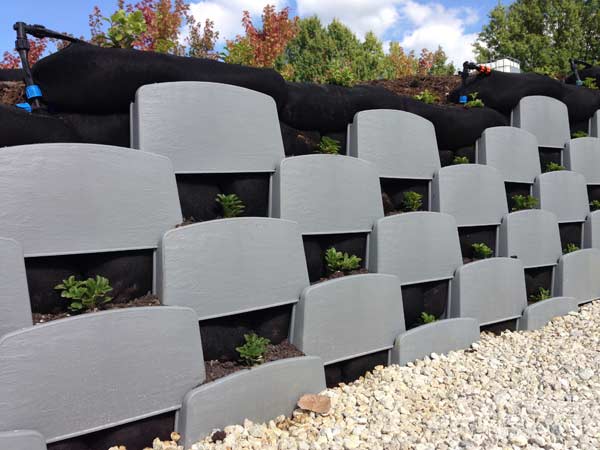
Filtrexx has been researching this opportunity in our LivingWall™ Division for quite some time. We wanted to develop something that has the attributes upon which our brand is built—locally made, recycled, and green—and leverages our expertise in soils and vegetation establishment, but in the DIY retaining wall market. Mark Woolbright, our division manager has developed this unique, patent pending option called EnviroBloxx™. These 100% recycled polypropylene blocks look—and perform—like concrete. They have a planting cavity that can be filled with GardenSoxx® or loose GrowingMedia™ that offers reliable quality for plant growth and resists movement from high wind or rains.
Ironically, the big box stores’ extensive block options have a height limitation for those products at two feet. Two feet? Many people use them to build walls much taller, and often these walls have issues over time, being pushed out by the backfill or just being unstable. So a good do-it-yourself retaining wall has not really been offered successfully in the marketplace.
Here are some of the benefits we already see with this unique invention:
- Lightweight: EnviroBloxx are only 3 lbs each—easy to carry several to a wall destination
- Easy to Handle: the built in handle makes them easy to work with and easy to insert the strap for compaction—anyone who has dropped a 40 lb block on their shin knows it is an unforgettable event; this is not an issue when using EnviroBloxx
- Stackable: over 500 EnviroBloxx fit on one pallet, so imagine how many can fit in your car, SUV, or small truck—compare this to hauling even 10 to 20 of the 40 lb concrete blocks
- Durable: the high UV resistance will provide years of stability—if properly vegetated, they should last a lifetime
See the article below for more information about EnviroBloxx.
There are numerous other benefits, including that this is a recycled material. The whole carbon footprint of using concrete is not very responsible compared to this option. Consider the hauling of concrete, storage, re-handling, and the final installation.
The combination of EnviroBloxx with our proven expertise in vegetation establishment means the do-it-yourself customer has more predictable results, and a greater assurance of success.
EnviroBloxx can also be used without GardenSoxx by snapping in the optional side rails and filling the planting cavity with loose media. This option is fine if the media is a quality bagged product, and it is also ideal for the homeowner who prefers a specific growing media.
Anything can be planted in the EnviroBloxx wall, including drought-tolerant natives, edibles, herbs, and flowers. EnviroBloxx should be installed with drip irrigation to ensure plant establishment, especially in arid environments.
EnviroBloxx represents one of the truly unique opportunities for vertical gardening, especially in urban areas. Reduction of heat island effect, increased infiltration and water retention and detention, the creation of wildlife habitat, not to mention enhanced beauty, are among the many benefits of this product.
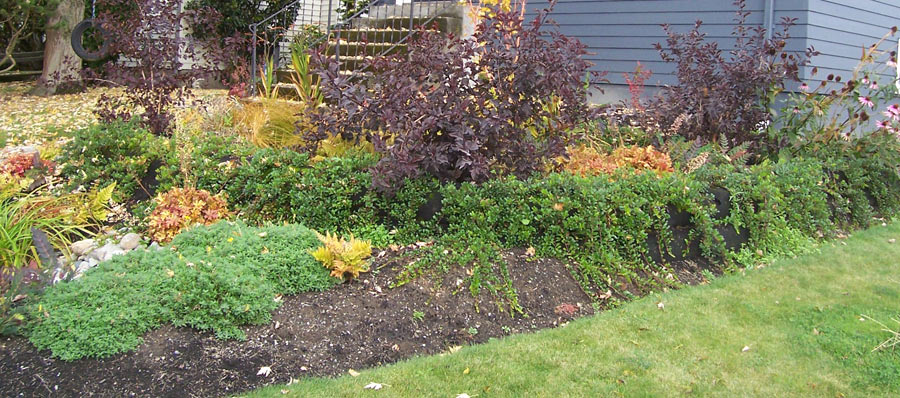
Enhancing Beauty and Function in a Terraced Rain Garden
Everett, WA
In 2011 the community of Everett, Washington set out to mitigate flooding from sewage backflows. The construction of large new complexes had added to both runoff and sewage loads, taxing the combined sewer system beyond its limits. Upset residents asked the city to come up with a solution.
The city wanted new solutions that were cost-effective. The design and implementation team included: Stewardship Partners (Seattle, WA), Snohomish Conservation District, Washington State University Extension of Snohomish County, the City of Everett, Cedar Grove Composting (Seattle, WA), and Innovative Landscape Technologies (Everett, WA).
The team planned to create a seven rain garden pilot project, including a large community outreach component. The selected sites were on very tight clay soils, with some areas on a high water table, presenting challenges regarding overflow options. Derek Hann, P.E., from the Conservation District engineered the systems, including underdrains and injection wells for some of the rain gardens. The injection wells move overflow down into the sandy aquifer 65 feet below the surface. Everett’s aquifer is not used for wells and any filtered and cleaned water (such as water from a rain garden) is badly needed, as it was stressed from industry in the early-to-mid 20th Century.
The rain garden project featured seven different systems, including a terraced system utilizing Filtrexx® Soxx™:
- an oversized rain garden with underdrain, collecting roof runoff and subsurface backyard drainage overflowing into an injection well
- a rain garden with underdrain, collecting roof runoff only and overflowing into the city’s original drainage system
- a rain garden terraced with underdrain, collecting roof runoff only and overflowing into the city’s original drainage system
- an infiltrating bog rain garden in solid clay, without underdrain, collecting roof runoff and front yard surface flow, with minimal overflow onto the curb
- a rain garden that is very deep in clay, collecting roof runoff and front yard surface flow, with underdrain and two overflows—one into the city’s original drainage system that is turned off and a sheetflow to the curb that is open
- a rain garden collecting roof runoff, without underdrain, with the overflow sheetflowing onto the lawn
- a rain garden in clay soil, with underdrain, collecting roof runoff and front yard surface flow, overflowing into an injection well (this rain garden is also in an area with high water table)
Soil spec’s came from Cedar Grove Composting and the WSU Department of Ecology. Innovative Landscape Technologies provided the coordination and the installation service, sharing their field experience, recommending technologies, working with the engineer, and guiding the planting plan.
Just as excavation began, Washington State University Stormwater Research Center in Puyallup released new research findings on challenges underdrains can create in rain gardens: During heavy rain events, underdrains help move overflow out of the rain garden. However, they can, and often do, move the water out of the rain garden too fast, before it has had enough time to filter, leading to nitrification in the overflow.
To remedy the newly recognized underdrain issues, Hann, along with Zsofia Pasztor and Zsolt Pasztor from Innovative Landscape Technologies, designed a vertical underdrain/overflow control structure. This simple solution functions as an underdrain, but because it is vertical, it does not speed up the water flow excessively. In systems with multiple overflow options, a gate valve enables the facility manager to direct the overflow as needed. The structure is now included in the Snohomish County Design Standards as an accepted solution on their slowly draining clay soils.
The project also featured Filtrexx Soxx™ technology. Zsofia Pasztor recommended using the Soxx for the terraced rain garden system rather than concrete blocks or rocks. “The Soxx filter the water and add a vertical planting surface, making them an ideal solution for the project,” said Zsofia Pasztor.
The terraced rain garden sits on a gentle slope. The upper cell receives water from a portion of the home’s roof and overflows through a pipe into the lower cell. The lower cell receives runoff from the other half of the roof. The Soxx are used as a berm and vegetated retaining wall between the two cells.
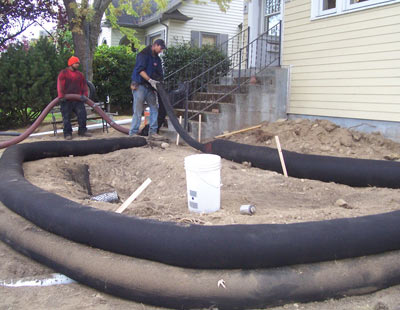
Filtrexx® Certified℠ Installer Applied Organics (Carnation, WA) filled the Soxx on site using a pneumatic blower, and Zsofia’s team planted hundreds of Kinnikinnick plugs. These Soxx became the focal point for the entire project, as even today people stop by to see how beautiful it looks with the plants growing nicely in the retaining wall.

The entire system overflows through the vertical underdrain/overflow control structure into the city’s original drainage system. It no longer floods, however. The soil is draining even better than originally expected, due to the microorganisms in the bioretention soil mix. The evergreen plants move water out of the soil as well—they evapotranspire the water all year long. As the Northwest typically receives most of the rainfall during the winter months, evergreen plants are essential for the function of the rain garden, not just for the aesthetics.
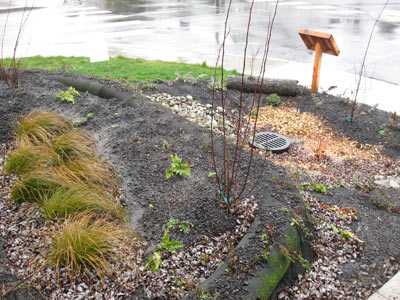
Filtrexx Soxx are the go-to solution now for terraced rain gardens. Innovative Landscape Technologies has since installed several more rain gardens and the Snohomish Conservation District recommends the Soxx if terracing is necessary. The Soxx are easy to install on any terrain without needing major grading and infrastructure preparation. When planted they provide a vertical soil and root based surface contributing to aesthetics, wildlife habitat, oxygen production, water quality, and flow control.
Residents have had no flooding since the rain gardens were installed. The pilot project proved so successful that the city has lunched a rebate program incentivizing rain garden installations within its Combined Sewer area.
Raising the Level of Quality
Watsonville, CA
A major project is underway in California to restore the levees along the Lower Pajaro River. The Pajaro watershed is approximately 1,300 square miles (3,400 km2). The River flows west for 30 miles (50 km), passing the city of Watsonville before emptying into Monterey Bay.
Over the past several decades, the River has flooded several times, including a 1995 flood that caused one death and over $95 million of total economic loss to the town of Pajaro. The City of Watsonville, and the Counties of Monterey and Santa Cruz are working with USACE to address the immediate and future flood protection needs of the region.
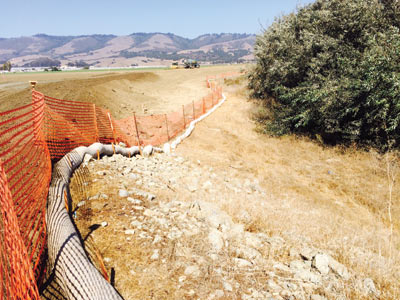
Mel Todd of Pacific Crest Engineering (Watsonville, CA) was the Qualified SWPPP Practitioner responsible for implementing the SWPPP and overseeing the project to ensure proper installation of the BMPs. The SWPPP specified compost berms and Soxx for sediment control along the river side perimeter. Filtrexx® cotton BioSoxx™ were used on the slopes.
Vision Recycling (Santa Cruz, CA) manufactured the BioSoxx and also produced the compost used in the berm. Jet Mulch (Capitola, CA) installed the berm and BioSoxx, some of which were filled on site using a blower truck.
In the end, the BioSoxx were used on larger portions of the project than originally planned–roads for the blower truck became difficult to access and so palletized BioSoxx were used.
We’ve Been Around This Block
Springfield, MO
The manufacturing of cement blocks is dirty work. Raw materials include bins of sand and gravel laden with sediment. One Midwest block manufacturer had been using straw bales at their outfall, yet they were constantly out of compliance with TSS and pH due to limestone stocked in the yard. An environmental consultant pointed them to Filtrexx as a potential low-cost solution to their high-stakes problem.

Filtrexx® Certified℠ Installer Travis Gathman of Ero-Co (Springfield) visited the facility. He knew the requirements and suggested a FilterCell™ to replace the useless straw bales. The company liked the solution’s minimal disturbance, in terms of the site as well as the time to install. They also liked its multiple layers of protection with emergency overflow.
Ero-Co filled the 12- and 18-inch SiltSoxx™ on site to create the FilterCell, but noted that a customer could easily build it themselves using pre-filled SiltSoxx™. With heavy flow expected, holes were drilled into the cement and the Soxx™ were staked using rebar that they had on hand.
The SiltSoxx have been on the ground for about a month, and the crew there has already removed about one ton of fine sand and sediment from behind the Soxx. “During the first rain event, the customer noticed that we were also removing oil contaminants from the water,” said Gathman. “Another added benefit.” They’ve been very pleased with how SiltSoxx are able to handle the TSS problem.
Introducing the Filtrexx® EnviroBloxx™ LivingWall™ System
EnviroBloxx™ are a radically unique, light-weight, stackable, and almost entirely plantable LivingWall system that brings a whole new level of handling ease and efficiency to DIY homeowners and professional landscapers. Let’s take a closer look at some of its features.
EnviroBloxx are cast hollow from 100% recycled injection molded plastic. Once installed they look just like traditional concrete plantable modules, but at 1sf coverage and only 3 lbs unfilled, they handle and place with ease and can be used to construct high walls with little to no equipment or special tools. Competitive systems available today require several small blocks to cover one square foot of space. They end up being more expensive than commercial systems.
When additional reinforcement is required, EnviroBloxx have built in receptors for a mechanical strap connection—the same connection used in our Trinity® and EarthBloxx™ Systems. (The Strap hole also doubles as a handle during construction.)
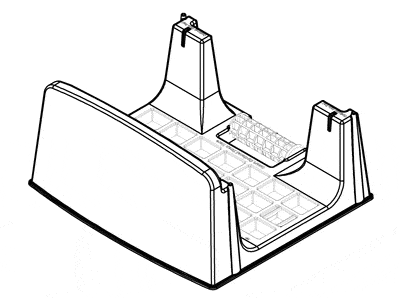
Open bottoms and sides allow media, water, nutrients, and roots to move freely within the facing system. This enables plant roots to stitch together the completed structure better than any block system. The EnviroBloxx can be filled using modular GardenSoxx for quick and easy media placement or, with the optional rail accessory, they can accept loose media. Drip irrigation should be installed to ensure plant establishment.
EnviroBloxx can be installed in a straight line and with slight curves by using the block with one 2-ft GardenSoxx®. Tight radii can be accomplished by using the side rail accessory with two smaller Soxx per pocket or with loose media in the pocket.
The versatility and ease of use of the EnviroBloxx is unmatched! There are many ways to build with it providing options for both the contractor and the homeowner. EnviroBloxx take the guesswork out of successful living walls so our customers always get what they pay for.
For more information, visit our EnviroBloxx web page, or contact Derek Dean at (330) 428-6725 or via email at derek.dean@filtrexx.com.
Find Us at these Shows
- Griffin Annual S.T.R.E.A.M. event- Oct. 22
- BioCycle East- Oct. 27-30, Baltimore, MD
- Midwest Levees and Rivers Technical Exchange- Oct. 27-29, St Louis, MO
- IECA Great Rivers Chapter Fall Conference- Oct. 28-29, Kansas City, MO
- Infrastructure for the 21st Century- Oct. 29, San Diego, CA
Filtrexx LivingWall Seminars
Nashville, TN – November 13, 5:00-7:30 p.m.
Bridgestone Arena “All Inclusive Zone”, 501 Broadway, Nashville, TN 37203
Register now »
St. Louis, MO – November 18, 2014; 7:30-11:00 a.m.
The Engineers Club of St. Louis, 4359 Lindell Blvd., Saint Louis, MO 63108
Register now »
Omaha, NE – November 19, 2014; 8-11:30 a.m.
Bel Air Banquet Room, 12100 West Center Road, Suite 520, Omaha, NE 68144
Register now »
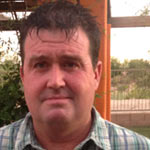 Filtrexx Expands in the Southwest
Filtrexx Expands in the Southwest
Cary Pobstman is an Arizona native who grew up in the small farming community of Gilbert. Being raised on a farm, Cary has always had a bond with the outdoors and everything it has to offer. This lead him to start his own landscape contracting company at just 19 years old. His unique design and passion for the natural desert look made this company one of the top in Arizona. It was one of the first to successfully relocate saguaro cacti from “unsalvageable” areas using a special harness that he created, which is still used today. Cary also developed a nursery that primarily grew plants native to the Sonoran Desert that supplied wholesale and retail customers with over 200 native species.
Cary continuously innovates and always has a creative solution, even when it seems that all ideas have been exhausted. In his spare time he likes being with family and golfing on the many beautiful golf courses in Arizona.
New Filtrexx Website, Featuring Filtrexx University
If you haven’t yet seen the new Filtrexx website, check it out at www.filtrexx.com
The site provides a comprehensive view of our full product line, including the new LivingWall™ systems. An in-depth technology section helps visitors understand how Filtrexx products Mimic Nature®. The site also provides a quick reference to state and local agency approvals.

The piece we are most excited about is Filtrexx University. “Filtrexx has always been a leader in research and education,” said CEO Rod Tyler. “Filtrexx University provides a comparative review of commonly accepted CMPs and provides an objective yet truthful FU—Filtrexx University—review to products such as silt fence, straw wattles, coir logs, rock check dams, and other inferior CMPs.”
Filtrexx University includes a continuum of learning resources, starting from basic hydrology courses to advanced Professional Development Courses that allow you to put knowledge into practice.
As always, you can access Filtrexx specifications and download CAD drawings. You can also explore our extensive Research Library, and earn certification in the design and installation of Filtrexx applications.
“We want the engineering and construction industries to make a fundamental shift to performance-based practices,” said Tyler. “We created this website to help make that happen.”


2 comments
Comment by COURET Stéphane
COURET Stéphane October 21, 2014 at 11:57 am
Erosion control specialist, we are in France and we are intersting by your products range. Could you send us a full paper documentation ?
Aquaterra Solutions
Les Vincentes
F-26270 Cliousclat
Comment by Ann Csongei
Ann Csongei January 7, 2015 at 3:17 pm
Hello,
Thank you for your interest in Filtrexx products. I am sending to you a folder of information about our technology and its applications. I will include the contact info for our Director of Research, Dr. Britt Faucette, who will reach out to you in a week or two, once you’ve had a chance to review the information sent.
Kind Regards,
Ann Csongei
Marketing & Public Relations